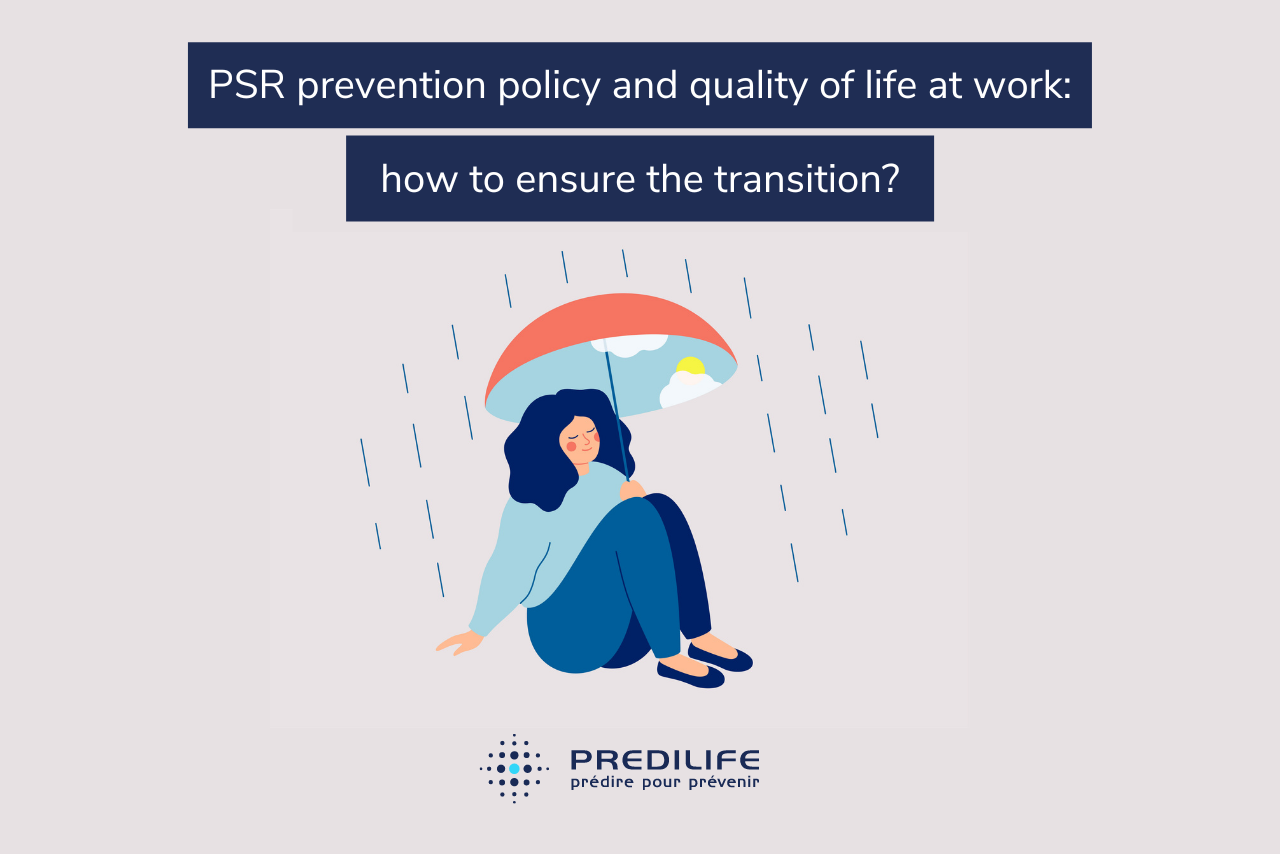PSR prevention policy and quality of life at work: how to ensure the transition?

Since the national interprofessional agreement on the quality of life at work (QVT) of 2013, many companies have begun a transition in order to develop their psychosocial risk prevention policy (RPS) towards an approach more focused on QVT. Indeed, the QVT approach is more encompassing whether at the level of the areas of intervention or the actors concerned. Adopting such an approach does not amount to drawing a line under what has been done previously in the area of PSR prevention. On the contrary, it can serve as a starting point for this transition and for the implementation of new processes or new actions.
Prevention of PSR, a part of the quality of life at work
Risk assessment is an integral part of the employee obligations. employer in occupational health. During this process, the human resources department may have to put in place a PSR prevention policy which will aim to provide an appropriate response to the risks identified and to the company’s resources.
This evaluation must be systematic when new procedures are implemented, new equipment used and more generally when working conditions change. The latter can also be based on alerts received from employees, on the frequency or number of work stoppages (related or not to an accident at work or an occupational disease).
Thus, despite its name, the PSR prevention policy is most often aimed at curative and not preventive. Its ambition is to provide an answer to an identified problem. The QVT approach is intended to be more general by not focusing solely on the risks but by seeking solutions to improve working conditions as well as productivity.
The PSR prevention policy can then serve as a springboard for the implementation of a QWL approach within the company and allow the actors concerned to go further than risk management.
The QWL approach: the employee actor of the quality of life at work
While the PSR prevention policy mainly involves human resources, occupational medicine and more generally prevention professionals, QVT will integrate all employees both as beneficiaries and actors. All company departments can be involved in the implementation of actions related to QWL as explained by the ANACT (National Agency for the Improvement of Working Conditions).
The more encompassing approach of QVT is not limited to the actors concerned but also affects the field of action of the company. It can then offer its employees prevention actions that are no longer limited to occupational risks and include raising awareness of public health risks.
As a reminder, 15% of the active population is affected by a chronic disease. Thousands of workers have to deal with a cancer diagnosis each year. Integrating public health issues into the company’s QWL approach makes perfect sense for both employees and employers. Indeed, the latter has to deal with work stoppages which have financial consequences as well as on the organization of services.
This health policy can take the form of prevention and awareness campaigns on the risk factors of developing a particular pathology. Predilife can help you go even further by allowing your employees to benefit from predictive multi-pathologies assessments< /a> carried out in complete confidentiality and personalized advice based on the risk profile thus established. Do not hesitate to contact us for more information.